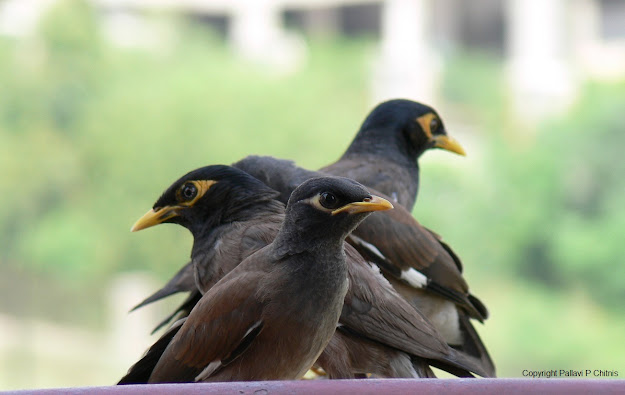 |
| Female Shikra |
It was time to leave for work. I was packing my lunch, while my sister read newspaper in the dining area. She looked up while turning a page and happened to see a big bird, about a foot tall, perched in the balcony across the room. This was an opportunity that could not be missed.
We took turns to take pictures and admire the magnificent bird. The bird, stayed on the spot for few minutes, fanning its wings and tail feathers, in the warm winter sun. A soon as it saw us, the bird spread its wings and flew away.
The bird was identified as shikra, a resident of our neighborhood. It can be seen perched on trees or lampposts, waiting for unsuspecting prey. It targets the juvenile or hatchlings of many birds; even crows' nests are not spared.
 |
| Mr Shikra |













